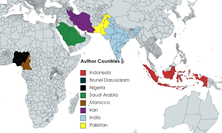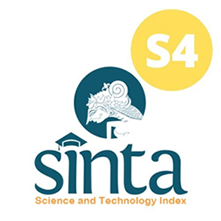Monitoring SpO2, BPM, and Temperature on Smartband with Data Sending Using IoT Android Display
Abstract
No matter if a patient is receiving care at home or in a hospital, monitoring them is an essential part of healthcare. Currently, many hospitals use a manual method to measure body temperature, oxygen saturation, and heart rate, necessitating physical visits from nurses to patients' rooms to get data. This approach, however, turns out to be less effective and time-consuming. This research aims to develop a wearable device placed on a patient's wrist is the main goal of this project. Body temperature, oxygen saturation, and heart rate are the three vital sign metrics that this gadget will be able to continuously monitor in real-time. Additionally, Ubidots integration will enable the device to deliver notifications based on the data gathered.The contribution of this research is the development of IoT-based wearable devices for remote monitoring, which aims to improve the quality of health service monitoring. The tool is expected to facilitate remote monitoring for medical personnel and patient families. This research method uses MAX30100 as digital sensors to monitor heart rate, oxygen saturation and MLX90614 as a sensor to detect body temperature. The results of this research can display data on the Ubidots application and send notifications to email. The results showed that the SpO2 sensor had the lowest error rate of 0.2% and the highest mistake rate of 1.6%. The error rates displayed by the BPM sensor varied, with the lowest being 0.6% and the largest being 5.68%. For body temperature measurements, the minimum error rate recorded is 0.002%, while the maximum error rate is 0.016%. This research shows that it is time to develop further into a sophisticated health monitoring tool to improve the quality of health services.

This work is licensed under a Creative Commons Attribution-ShareAlike 4.0 International License.
Authors who publish with this journal agree to the following terms:
- Authors retain copyright and grant the journal right of first publication with the work simultaneously licensed under a Creative Commons Attribution License that allows others to share the work with an acknowledgement of the work's authorship and initial publication in this journal.
- Authors are able to enter into separate, additional contractual arrangements for the non-exclusive distribution of the journal's published version of the work (e.g., post it to an institutional repository or publish it in a book), with an acknowledgement of its initial publication in this journal.
- Authors are permitted and encouraged to post their work online (e.g., in institutional repositories or on their website) prior to and during the submission process, as it can lead to productive exchanges, as well as earlier and greater citation of published work (See The Effect of Open Access).











